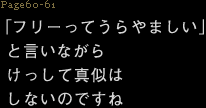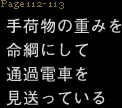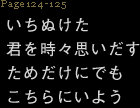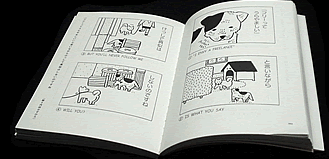| "Tanka" [short poem] is a form of Japanese poetry,
based on thirty-one syllables divided into five parts, following a 5-7-5-7-7
pattern. The form has a long history of over one thousand years.It
is so familiar to Japanese people that "waka", the general
term for "Japanese poetry" that originally encompasses "choka" [long
poem] and "sedoka" [head-repeated poem], only suggests tanka
on many occasions. (For your information, Japanese anthem "Kimigayo" was
written in the form of tanka.)
Tanka had been able to present itself as a major representative form
of waka until modern times. Upon the arrival of western poetry in Japan,
however, "Shintaishi-sho" [Selections from Poems in the New
Style] (1882) and many other works started to explore the new realms
of Japanese poetry beyond waka. Thus, its poetic quality stood challenged;
on the weak grounds of merely being a form of waka, tanka now had difficulty
with presenting itself as modern poetry. Since then, it became essential
for tanka not only to follow the form of waka, but also to have the
meaning as a different genre from waka.
During the first half of the 20th century, tanka was frequently dismissed
(or denied) as inadequate to establish a genre of modern literature.
This sort of "Tanka Metsubo Ron" [criticism that dismisses
tanka as ruined] revealed the problems of tanka-as-literature and kept
resurfacing
in many variants, but it would always lead tanka poets to sophisticate
their own theories and fertilize their works, which eventually constituted
an outline of tanka-as-literature.
When the tanka poets explored the outline, their main focus was on
how to establish tanka as self-expression. Two major schools of modern
tanka, namely "Myojo" [Venus] and "Araragi" [Yew],
are often considered to represent the opposite poles of the debate
(romanticism and realism, respectively), with their contrasting slogans
("jiga no shi" [poem of myself] by Yosano Tekkan from "Myojo",
and "shasei" [realistic observation] by Masaoka Shiki whose
successors formed "Araragi"). In retrospect, however, they
can be regarded as two variations of the exploration of self-expression
in tanka.
Until sometime around the '80s, tanka-as-literature had repeated a
way of self-expression, in which a "self-image" appearing
in your work is regarded as yourself, and had suggested that this attitude
had significance in literature. The "self-image" in this
context can vary from an author in reality to something constructed
in a fiction to an abstract notion in a simile/metaphor. In any case,
a piece of tanka is supposed to make you imagine the inner mind of
someone who wrote the text, leading to suggest his/her "self-image".
From the '80s, when the standard value of literature started to be
shaken, this style of tanka that focused on the expression of one's "self-image" was
hugely unsettled too. One of the most symbolic phenomena was the sensational
response towards Tawara Machi's "Sarada Kinenbi" [Salad Anniversary]
(1987). Let alone its massive commercial success with 2.5 million
copies sold to this date, the book had a sophisticated style of expression
that emphasized something other than "self-image"; deliberately
choosing a conventional type of "self-image", the author
employed colloquialism, rather than literary style of the traditional
tanka, to depict the contemporary scene of everyday life. With "Sarada
Kinenbi" in mind, you inevitably get a different perspective of
the history of tanka after modern times.
When Masuno Koichi emerged in the mid '90s, the outline of tanka-as-literature
had already become extremely uncertain since the "Sarada Kinenbi" phenomenon.
He provoked yet another new wave for the world of tanka: while traditional
tanka - under restraint of "self-image" - has always tried
to express universality from one particular individual's point of view,
Masuno doesn't adhere to that old attitude. In his style, a universal
perspective can be found through the eyes of one of our contemporaries.
Aiming at being common rather than being special - being just one
of our contemporaries rather than being an outstanding individual -
but at the same time, being something new rather than being a mediocrity,
his style tends to exclude the specific legacy of the history of tanka
expression. It might be difficult for readers to get a clue to see
him in the past history of tanka. However, if you read his works along
with traditional tankas, you'll be able to regard the whole body of
contemporary tanka as something richer and wider. |















